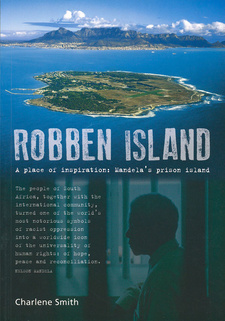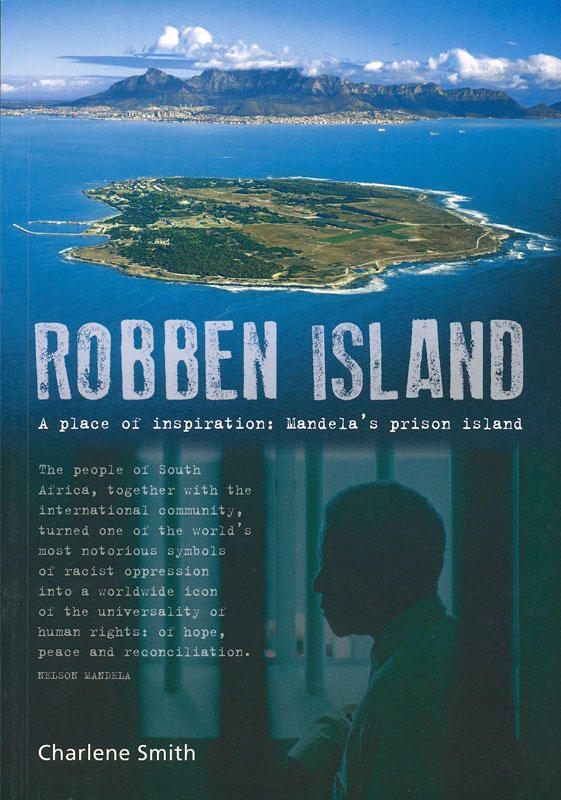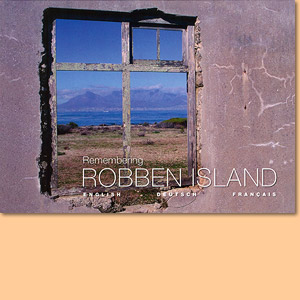Charlene Smith and the new edition of her book Robben Island
In its small, wave-beaten boundaries Robben Island holds the memories of a nation and the legends of the greatest and weakest of South Africans. The Island has been the subject of books, poems, plays and a vast oral mythology. In a new edition of her book, Charlene Smith displays the infamous island unser various aspects.
Better known as 'Esiquithini' (the Island) to the three generations of political prisoners who occupied it in the second half of the 20th century, it carries the scars of four centuries of human suffering and triumph. Its 12-kilometre circumference is like a small heart cut from the mainland bosom that for years monitored and regulated the pulse of a nation. For most of Nelson Mandela's 27 years in jail, he lived on the Island. It was his suffering that made Robben Island a household word and a symbol of apartheid evil. He says now that had he been by himself he would have impressed no-one, 'but I was in the company of highly developed human beings. We spoke with each other about our problems and these discussions gave us self-confidence and uplifted us spiritually, freeing us from the negative obsessional side of life in prison.' And perhaps that shared experience, the learning, the knowledge that all are ultimately co-dependent and negotiation is more fruitful than conflict, honed wisdom and led to the evolution of South Africa's greatest sons. The Island is 11 kilometres from Cape Town across a bitterly cold sea that snaps at the hulls of ships. Thick islands of kelp bob in the waters close to the shale beaches, and crayfish, lobster and perlemoen drift in its small inlets. It is a sea that arouses the conqueror in many, and usually delivers failure. Since at least the turn of the 19th century, swimmers have tried to beat the cold and the tides; in 1909 and 1926 it was women who managed to make the swim across the bay without the benefit of wetsuits. On May 11, 1993, University of Cape Town student Alan Langman managed the 7,2-kilometre swim to Bloubergstrand in two hours and 40 minutes. These swimming feats probably mean that Robben Island may have had more succesful escapes than its jailers have cared to admit. Did, as an example, 20-year-old Jan Kamfer, the only recorded escapee in the 20th century, die in the icy waters after he stole a paddleski from outside a warder's house on March 8, 1985, and paddled furiously to the low, beckoning finger of Bloubergstrand? He could not have chosen more perfect conditions. The Port Captain's office said the wind in Table Bay at the time of the escape was south-easterly and the swells small. It was possible for a person on a paddleski to make it to the mainland. A massive sea and air manhunt was launched after Kamfer failed to respond at evening roll call and a paddleski was discovered to be missing. On March 11, prison officials said Kamfer had certainly drowned, after all, they had found no trace of him. They pointed out that the sea around the Island is infested with sharks and the water, they claimed, cold enough to kill a man in 45 minutes (a claim which early 20th-century swimming conquests proved fallacious). Sergeant Koos Vrey, who worked on the Island when Kamfer escaped, said the paddleski had a hole in it. He doesn't believe Kamfer's escape was succesful, and even if the paddleski remained afloat, he said, 'at that time there were three large sharks we often saw around the Island; one was a shark of about 5,5 metres'. Maybe Kamfer, like Langman, showed nothing is impossible with skill and a strong will. But that is not always enough; Xhosa prophet Nxele Makana and 30 fellow prisoners were less fortunate. They drowned during an escape attempt in 1820, after a small boat they had stolen from whaler John Murray capsized close to Bloubergstrand. Africanists among the political prisoners of the 1960s to the 1990s called the island Makana Island and claim his ghost walks the Island still. [...]
Title: Robben Island
Subtitle: A place of Inspiration: Mandela's Prison Island
Author: Charlene Smith
Publisher: Randomhouse Struik
Imprint: Travel and Heritage
Cape Town, South Africa 2013
ISBN 9781920572907 / ISBN 978-1-920572-90-7
Softcover, 15x21 cm, 176 pages, many photosThis is a press release of Namibiana Buchdepot: Charlene Smith and the new edition of her book Robben Island.
Empfehlungen
Mandela: In Celebration of a Great Life
This is the newest, posthumously published edition of Mandela: In Celebration of a Great Life.
Robben Island: A place of Inspiration. Mandela's Prison Island
Robben Island, best known as Nelson Mandela's prison, here is introduced in various facetts.
Remembering Robben Island
Remembering Robben Island is a heritage title in the Picturesque series of Randomhouse Struik.
Letters from Robben Island
Remarkable stories of suffering, humour, humanity and the triumph of the human spirit





